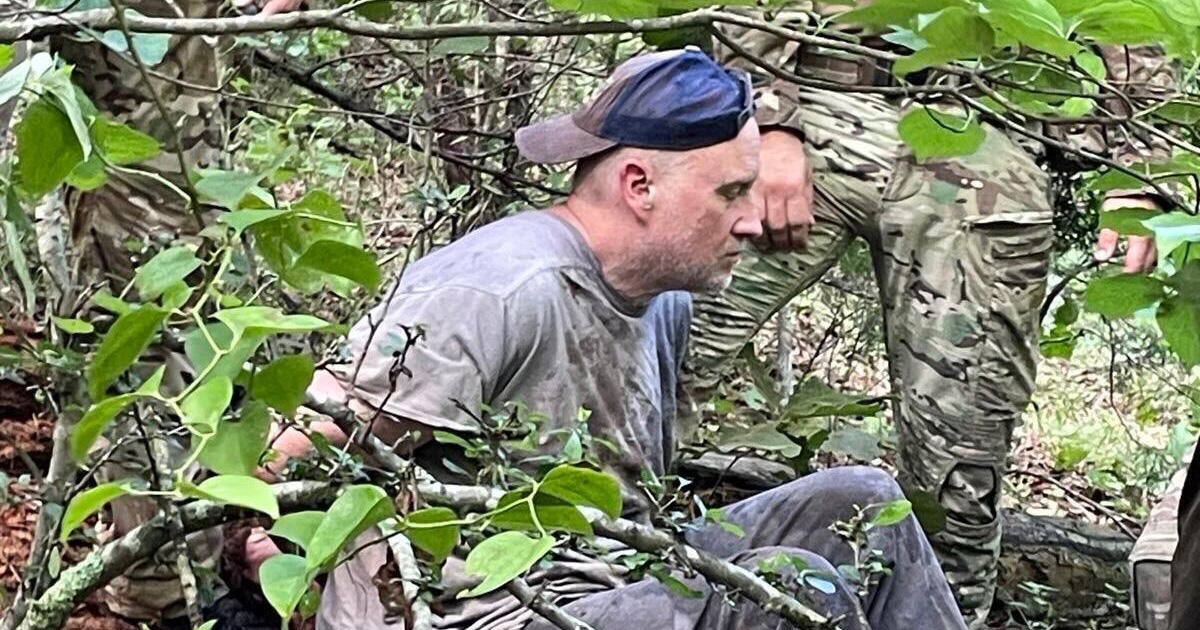How Did the Devil in the Ozarks Plan a Six-Month Prison Escape?

Understanding the Escape of the "Devil in the Ozarks"
In a shocking turn of events, former police chief Grant Hardin, infamously dubbed the "Devil in the Ozarks," orchestrated a meticulously planned escape from an Arkansas prison. This incident has highlighted significant security lapses within the correctional system, raising questions about the management of inmates classified as high-risk. An internal review by the Arkansas Department of Corrections has unveiled the specifics of Hardin's escape plan, the failures that allowed it to happen, and the subsequent actions taken by authorities to enhance prison security.
The Planning Phase of Hardin's Escape
Hardin's escape did not occur overnight; it was the result of six months of careful planning. Working as a kitchen employee at the Calico Rock prison, Hardin exploited the lax security measures in place to gather materials necessary for his elaborate scheme. He crafted a fake law enforcement uniform using black Sharpie markers and discarded laundry. To create a convincing badge, he ingeniously repurposed the lid of a can.
According to the review, Hardin hid his supplies in the bottom of a trash can within the kitchen, a location he deemed safe due to the lack of regular inspections. This strategic concealment allowed him to remain undetected while he readied for his escape. The internal report emphasized the negligence of the prison staff, describing their security protocols as "very lax."
Execution of the Escape
On May 25, 2025, Hardin executed his plan. His disguise worked flawlessly as he approached a guard at a back gate, confidently instructing him to "open the gate." Unfortunately, the guard complied without verifying Hardin’s identity, a clear breach of protocol. This lapse in security, combined with the absence of proper supervision in the kitchen, proved catastrophic for the facility.
In the aftermath of his escape, Hardin managed to survive using food he had smuggled from the prison and creek water, along with berries, bird eggs, and ants found in the wild. His intention was to remain hidden in the woods for as long as six months while navigating westward. Despite this elaborate planning, Hardin’s freedom was short-lived; he was recaptured just days later on June 6, approximately a mile and a half from the prison.
Investigations and Consequences
The Arkansas Department of Corrections conducted a critical incident review following Hardin’s capture, revealing a host of security failures that allowed the escape to occur. Two prison employees were terminated for their roles in the incident, including a kitchen worker who had allowed Hardin unmonitored access to the back dock and a guard who failed to perform an identity check before granting him exit.
In addition to the firings, several employees faced suspensions and demotions as a result of the investigation. This event has prompted a broader examination of the systemic issues within the correctional facility, with lawmakers questioning the adequacy of current security measures.
Security Reforms Post-Escape
In response to Hardin’s escape, the Department of Corrections has initiated several reforms aimed at preventing similar incidents in the future. Among these changes is the removal of electric locks on the gates, which previously allowed inmates to exit the facility without proper authorization. The review also recommended increasing surveillance through additional cameras, specifically targeting blind spots in areas that are critical for monitoring inmate movements.
Moreover, the report urged that all searches for contraband be expanded to include mechanical and side rooms, ensuring that no hidden items could facilitate future escapes. These recommendations underscore the necessity for a thorough and systemic approach to prison security, particularly for high-risk inmates like Hardin.
Public and Legislative Response
The escape of Grant Hardin has ignited discussions about the safety and management of correctional facilities in Arkansas. State Rep. Howard Beaty, co-chair of the Legislative Council’s Charitable, Penal and Correctional Institutions Subcommittee, has indicated that further discussions will focus on the findings of the internal review and the broader implications for prison management.
Concerns have been raised by lawmakers, including Republican state Sen. Ben Gilmore, about the adequacy of the review. He expressed that the investigation may have focused too narrowly on the immediate failures rather than addressing the systemic vulnerabilities that allowed Hardin’s escape to occur.
The Legal Aftermath
As a result of his escape, Hardin is facing additional charges related to the incident. He has pleaded not guilty to the escape charges, and his trial is scheduled for November. The legal proceedings will likely examine not only Hardin's actions but also the responsibilities of the correctional facility in maintaining security and preventing breaches.
Hardin's Criminal Background
Grant Hardin's criminal history is as troubling as his escape attempt. He was previously the police chief of a small town in Arkansas and has been convicted of heinous crimes, including first-degree murder and multiple counts of rape. His conviction for the murder of James Appleton in 2017 resulted in a 30-year sentence, and subsequent DNA evidence linked him to a 1997 rape case, for which he received an additional 50 years in prison.
This background raises serious questions about the classification and supervision of inmates within Arkansas's correctional system. Hardin was misclassified, which contributed to his placement in a medium-security facility rather than a maximum-security prison, where he would have likely faced stricter controls and oversight.
Lessons Learned and Future Directions
The escape of Grant Hardin serves as a critical case study for the Arkansas Department of Corrections and similar institutions nationwide. It highlights the importance of rigorous security protocols, continuous staff training, and the need for ongoing assessments of inmate classifications. The implications of this incident extend beyond the immediate concerns of security; they raise fundamental questions about the integrity of the correctional system and its ability to rehabilitate or contain dangerous individuals.
Moving forward, it is essential for correctional facilities to implement comprehensive security audits, increase staff accountability, and improve inmate monitoring systems. Engaging with external experts to assess security measures can also provide valuable insights into best practices and innovations that enhance safety.
FAQs
What led to Grant Hardin's escape from prison?
Grant Hardin's escape was facilitated by lax security measures in the prison kitchen, where he worked. He crafted a fake law enforcement uniform and was able to leave the facility without proper identification checks.
How was Grant Hardin recaptured?
Hardin was recaptured on June 6, 2025, using tracking dogs that picked up his scent approximately a mile and a half from the prison. Authorities employed canines, drones, and helicopters in their search efforts.
What actions have been taken following Hardin's escape?
In the aftermath of Hardin's escape, two prison employees were fired, and several others were suspended or demoted. The Arkansas Department of Corrections is also implementing security reforms, including the removal of electric locks and the introduction of additional surveillance cameras.
What is Grant Hardin's criminal history?
Grant Hardin has a significant criminal background, including convictions for first-degree murder and multiple counts of rape. He was sentenced to a total of 80 years in prison for these offenses.
What are the implications of this incident for prison security?
This incident underscores the need for rigorous security protocols and regular assessments of inmate classifications. It highlights the importance of accountability among prison staff and the necessity of continuous training to prevent future breaches.
The escape of Grant Hardin serves as a stark reminder of the vulnerabilities present in correctional facilities. As authorities work to rectify these issues, one must ponder: what additional measures can be taken to ensure the safety of both inmates and the public? #PrisonEscape #CriminalJustice #SecurityReform
Published: 2025-08-16 01:58:00 | Category: Trump GNEWS Search



